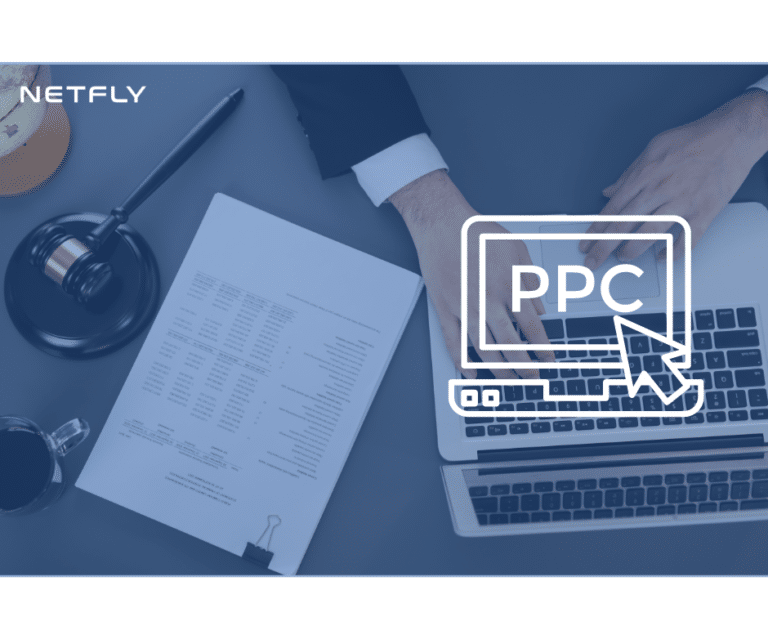Elevate your law firm’s visibility with targeted SEO strategies. Start with keyword research using tools like Google Keyword Planner to identify high-value and long-tail keywords. Optimize your on-page SEO by enhancing meta descriptions and internal linking with primary keywords. Increase site speed by optimizing image sizes and employing caching techniques. Boost local SEO by optimizing your Google My Business profile and gathering client reviews. Build high-quality backlinks and enhance social media tactics for broad reach. Guarantee your site is mobile-optimized to improve traffic and rankings. By monitoring and refining these strategies, you’ll uncover more ways to boost online presence.
Key Takeaways
- Conduct competitor analysis and focus on high-value and long-tail keywords for optimized visibility.
- Enhance on-page SEO with primary keywords in meta tags and improved internal linking.
- Optimize site speed using image optimization, caching techniques, and streamlined code.
- Claim and optimize Google My Business listing for better local search rankings.
- Build quality backlinks through targeted link building strategies and guest blogging.
Master Keyword Research
Keyword research is the cornerstone of effective SEO, and mastering it can greatly enhance your law firm’s online visibility. Begin by conducting a thorough competitor analysis to identify the keywords your peers are ranking for. This analysis helps you uncover gaps in your strategy and discover new opportunities. By examining competitors’ keyword usage, you can identify high-value terms that haven’t been fully capitalized on.
Focus on long tail keywords, as these are typically less competitive and more specific, attracting clients who are closer to making a decision. For example, instead of targeting broad terms like “lawyer,” aim for more precise phrases like “family law attorney in Los Angeles.” This not only improves your chances of ranking higher but also guarantees you’re attracting the right audience.
Use tools like Google Keyword Planner or SEMrush to analyze search volume and competition levels for your chosen keywords. Track and measure your keyword performance regularly, making sure that your strategy evolves with changing trends and client needs. By systematically integrating competitor analysis and long tail keywords into your research process, you’ll position your law firm for greater online success and visibility.
Optimize On-Page SEO
Boosting your law firm’s online presence requires a strategic focus on enhancing meta descriptions and improving internal linking. Research shows that optimized meta descriptions can increase click-through rates by up to 5.8%, while effective internal linking can improve your site’s SEO performance by distributing page authority. By prioritizing these on-page SEO tactics, you’ll create a more navigable and appealing website for both users and search engines.
Enhance Meta Descriptions
How can enhancing your meta descriptions transform your law firm’s online presence? By crafting compelling meta tags, you improve click-through rates, directly impacting your search engine rankings. Data shows that meta tag optimization can increase organic traffic by up to 30%. When potential clients search for legal services, your meta description is often their first encounter with your brand messaging. It needs to be engaging and informative, providing a clear snapshot of your services.
To optimize your meta descriptions, focus on integrating primary keywords naturally. This strategy not only aids search engines in understanding your page content but also aligns with user intent. A well-crafted meta description should be concise, ideally within 155-160 characters, ensuring it displays fully on search results. This is pivotal for maintaining your brand messaging’s integrity and preventing truncation.
Incorporate actionable language that invites users to learn more about your services. For example, phrases like “Explore our legal solutions” or “Contact us for expert advice” can increase engagement. Remember, your meta description is a strategic opportunity to differentiate your law firm from competitors, framing your expertise in a way that resonates with potential clients.
Improve Internal Linking
Optimizing your meta descriptions sets the stage for effective on-page SEO strategies, one of which is improving internal linking. Internal links enhance your site’s structure and boost your law firm’s SEO by guiding search engines through your content. Using relevant anchor text in your internal links not only helps search engines understand the context of linked pages but also improves user navigation, keeping visitors engaged longer.
To effectively enhance internal linking, consider these data-driven strategies:
- Map Out Your Site Structure: Identify key pages and create a logical hierarchy that facilitates easier navigation for both users and search engines.
- Use Descriptive Anchor Text: Choose words that accurately describe the linked page’s content. This improves search engine understanding and user trust.
- Prioritize High-Value Pages: Link more frequently to pages that drive conversions or provide valuable information, signaling their significance to search engines.
- Regularly Audit Links: Perform routine checks to verify all your internal links are functional, avoiding broken links that can frustrate users and harm SEO.
Boost Site Speed
Boosting your site’s speed can greatly enhance user experience and improve your search rankings, with studies showing that a one-second delay can lead to a 7% reduction in conversions. Start by optimizing image sizes to make sure faster loading times, and minimize server requests to streamline data processing. Implement caching techniques to decrease load times further, as quicker sites tend to have better SEO performance and lower bounce rates.
Optimize Image Sizes
Images make up about 21% of a webpage’s total weight, and optimizing their sizes is important for improving site speed. By focusing on image optimization, you can greatly enhance your website’s performance, which directly impacts your search engine rankings. Faster-loading pages lead to better user experiences and higher conversion rates. Here’s how you can optimize your images effectively:
- Choose the Right Format: Use JPEGs for photographs, PNGs for transparent images, and SVGs for icons.
- Use File Compression: Implement tools like TinyPNG or ImageOptim to reduce file sizes without losing quality.
- Set Proper Dimensions: Scale images to the exact size needed for your webpage to avoid unnecessary data loads.
- Leverage Lazy Loading: Load images only when they appear in the viewport to save bandwidth and reduce initial load time.
Minimize Server Requests
Reducing server requests is one of the most effective methods to enhance your site’s speed and improve user experience. By minimizing these requests, you can greatly decrease your page load time, which is crucial for retaining visitors and enhancing your search engine rankings. A good starting point is to decrease plugins. Each plugin you add to your site often introduces multiple files that must be loaded, increasing server requests. It is vital to regularly review your plugins, keeping only those that are absolutely necessary for your site’s functionality.
Another impactful approach is to streamline code. Bloated code can lead to unnecessary server requests, causing your site to slow down. By optimizing and tidying up your HTML, CSS, and JavaScript files, you can reduce the number of requests your server must manage. This optimization might involve eliminating whitespace, comments, and redundant code. Tools like minifiers are accessible to automate much of this process, aiding you in achieving a more efficient codebase.
Statistics indicate that even a one-second delay in page load time can lead to a 7% decrease in conversions. By concentrating on reducing server requests, you are positioning your law firm’s site for improved performance and increased visibility online.
Implement Caching Techniques
To effectively enhance your site’s speed and user engagement, implementing caching techniques is essential. By optimizing your website performance, you can meaningfully improve loading times, a critical factor for both user experience and search engine rankings. Caching reduces the time needed to retrieve and display content, making your site faster and more efficient. One key technique is browser caching, which stores static files on a visitor’s device, allowing faster access upon subsequent visits.
Consider these data-driven strategies to boost your website performance:
- Leverage Browser Caching: Store static resources like images, CSS, and JavaScript files on users’ browsers. This reduces load times for returning visitors by not re-downloading unchanged content.
- Implement Server-Side Caching: Use tools like Varnish or Memcached to save generated HTML pages and serve them without redundant database queries.
- Use Content Delivery Networks (CDNs): Distribute your content across multiple servers globally to reduce latency and improve load times for users regardless of their location.
- Optimize Cache-Control Headers: Set appropriate cache-control headers to define caching policies, ensuring that browsers and CDNs store, reuse, or update content as intended.
Enhance User Experience
An crucial aspect of enhancing your law firm’s online presence is improving user experience, which directly impacts your website’s SEO performance. By focusing on user engagement and effective website design, you can significantly boost your search rankings. Studies indicate that 88% of online consumers are less likely to return to a site after a poor experience. Therefore, prioritizing a seamless, intuitive interface is vital.
Start by optimizing your website design to guarantee fast loading times, as 47% of users expect a webpage to load in two seconds or less. A responsive, mobile-friendly layout is essential, considering over 50% of web traffic now comes from mobile devices. Use clear navigation and strategically placed calls-to-action to guide visitors through your site efficiently.
Additionally, integrate interactive elements like chatbots and contact forms to increase user engagement. These tools not only keep visitors on your site longer but also encourage them to take action, such as scheduling a consultation. Regularly monitor your site’s analytics to identify areas for improvement and implement A/B testing to refine design elements further. By enhancing user experience, you’ll not only improve your SEO but also create a more effective digital presence for your law firm.
Leverage Local SEO
Local SEO is an effective tool for law firms aiming to dominate their regional market. By optimizing your firm’s online presence with local citations and geo targeted keywords, you’ll enhance your visibility where it matters most—right in your community. Data shows that nearly 46% of all Google searches are seeking local information, making local SEO essential for capturing potential clients in your area.
To leverage local SEO effectively, focus on these key strategies:
- Claim and optimize your Google My Business listing: Make sure all your information is accurate and up-to-date, from your address to your practice areas.
- Incorporate geo targeted keywords: Use location-specific keywords in your website content, meta descriptions, and titles to appear in local search results.
- Build consistent local citations: Ensure your firm’s name, address, and phone number are uniform across all online directories and platforms.
- Encourage client reviews: Positive reviews build credibility and enhance your local search rankings.
Analyzing the impact of these strategies is vital. Use tools like Google Analytics to measure traffic from local searches and adjust your tactics based on data-driven insights. With a focused local SEO approach, you’ll position your firm as the go-to legal expert in your region.
Build Quality Backlinks
Boosting your law firm’s online visibility hinges on building quality backlinks, a cornerstone of effective SEO strategy. Quality backlinks from authority sites tell search engines your content’s trustworthy and relevant. To achieve this, focus on targeted link building strategies. Start with outreach campaigns aimed at high-authority websites related to the legal industry. These campaigns should be personalized and highlight the unique value your firm offers.
Guest blogging presents another effective avenue for acquiring backlinks. By contributing insightful articles to reputable legal blogs, you position yourself as an expert while gaining valuable links to your site. Be selective with your guest blogging opportunities, ensuring each platform aligns with your firm’s niche and has a strong domain authority.
Evaluate potential authority sites by analyzing metrics like domain authority and traffic. Tools like Moz and Ahrefs provide data-driven insights that can guide your decisions. Remember, quality trumps quantity; a few high-quality links from reputable sources can substantially impact your search rankings.
Implement these link building strategies consistently, and you’ll see improved search visibility, driving more traffic and potential clients to your law firm’s website. Stay analytical and strategic in your approach to maximize your SEO efforts.
Utilize Content Marketing
To maximize your law firm’s online visibility through content marketing, focus on crafting engaging legal content that resonates with your target audience. Guarantee each piece is optimized for search engines by incorporating relevant keywords and meta descriptions, which can boost your rankings by up to 94%. Additionally, leverage social media platforms to distribute your content widely, increasing your reach and driving more traffic to your website.
Craft Engaging Legal Content
Creating engaging legal content is important for any law firm’s SEO strategy. It’s not just about throwing legal jargon on a page; it’s about weaving legal storytelling that captivates your audience. When your content resonates, you boost audience engagement, driving more traffic and potential clients to your site. A solid content strategy guarantees your law firm’s brand voice remains consistent and authoritative across all platforms.
To craft engaging legal content, consider these strategies:
- Leverage Legal Storytelling: Transform complex legal concepts into relatable stories that illustrate their impact on real-life situations. This makes your content more digestible and memorable.
- Focus on Audience Engagement: Interact with your audience by posing questions or providing actionable insights. This interaction enhances user experience and keeps them returning for more.
- Define Your Brand Voice: Establish a tone that reflects your firm’s values and expertise. Consistency in your brand voice helps build trust and loyalty among your audience.
- Develop a Robust Content Strategy: Plan your content calendar around trending legal topics and client pain points. This proactive approach guarantees your content remains relevant and engaging.
Optimize for Search Engines
Many law firms acknowledge the significance of search engine optimization (SEO) as an integral part of their online strategy. To truly optimize for search engines, you need to embrace content marketing. This involves creating valuable, relevant content that attracts and engages your target audience. But it’s not just about content creation; effective link building is essential. By acquiring high-quality backlinks from reputable sites, you enhance your website’s authority, notably impacting your search engine rankings.
Staying updated with SEO trends is vital. Search algorithms constantly evolve, and what worked last year might not be effective now. For instance, Google’s emphasis on E-A-T (Expertise, Authoritativeness, Trustworthiness) means your content should reflect authority in your legal field. Analyzing data from your website’s performance can reveal which content strategies are working, allowing you to refine and optimize your approach.
Incorporate keywords naturally within your content to improve search engine visibility. Avoid keyword stuffing, which can lead to penalties. Instead, focus on long-tail keywords that align with user intent. By strategically using content marketing, you’ll strengthen your law firm’s SEO efforts, ultimately driving more traffic and increasing online visibility.
Leverage Social Media Platforms
Harnessing the power of social media platforms can greatly amplify your law firm’s online visibility and client engagement. To effectively leverage these platforms, it’s essential to adopt strategies that align with current digital marketing trends. By focusing on influencer partnerships and social media ads, you can reach broader audiences and enhance your firm’s reputation. Influencers can provide authentic endorsements, while targeted ads guarantee your content reaches potential clients.
Diving into trending topics and creating viral content can further boost your visibility. By staying updated on legal news and public interest issues, you position your firm as a thought leader. Engaging content that resonates with a wider audience often gains traction, leading to increased shares and engagements.
Here’s how you can optimize your social media strategy:
- Influencer partnerships: Collaborate with legal influencers who can endorse your services.
- Social media ads: Use targeted campaigns to reach users actively seeking legal advice.
- Trending topics: Create content around current events to stay relevant and visible.
- Viral content: Develop engaging posts that encourage sharing to expand your reach.
Optimize for Mobile
In today’s digital landscape, optimizing for mobile is essential as over 60% of all online searches now originate from mobile devices. Prioritizing mobile responsiveness is important for your law firm’s website to enhance user experience. A responsive design ensures your site adapts seamlessly to various screen sizes, which is crucial as users expect fast-loading pages and intuitive navigation. Google’s mobile-first indexing means that if your site isn’t mobile-friendly, you might miss out on valuable traffic.
Mobile optimization also plays a significant role in boosting local rankings. Search engines prefer websites that cater to mobile users, especially for local searches. When someone searches for legal services “near me,” Google often prioritizes mobile-optimized sites. Make sure your contact information and location details are easily accessible, helping potential clients find you quickly.
Moreover, optimizing for mobile can directly impact your conversion rates. A well-designed, mobile-responsive site can keep users engaged and encourage them to reach out for legal assistance. Don’t overlook mobile responsiveness as it’s essential to both user experience and local rankings. Investing in mobile optimization is a strategic move to improve your online visibility and attract more clients.
Harness Social Media
Social media platforms, often underutilized, can be a powerful tool to enhance your law firm’s online visibility. By focusing on social media engagement and leveraging analytics, you can strategically improve your firm’s presence. Start by identifying where your audience spends their time online. LinkedIn, Facebook, and Twitter are popular choices for legal professionals. Use these platforms to foster community building and establish trust with potential clients.
Content sharing is important. Post informative articles, case studies, or legal insights that resonate with your audience. Engaging content encourages shares, expanding your reach. Don’t forget to analyze your performance. Social media analytics offer insights into what content works best, allowing you to refine your strategy.
Here are key tactics to keep in mind:
- Engage regularly: Respond to comments and messages promptly to enhance social media engagement.
- Leverage analytics: Use data to understand which posts drive the most interactions and adjust your strategy accordingly.
- Build community: Create groups or forums where clients and peers can connect and discuss relevant topics.
- Optimize content sharing: Share content at peak times when your audience is most active to maximize visibility.
Monitor SEO Performance
Effective social media engagement can greatly enhance your online presence, but without monitoring your SEO performance, you might overlook crucial opportunities for growth. Start by utilizing SEO analytics tools to gain insights into how your website ranks in search engine results. SEO tracking is crucial for understanding which keywords drive traffic to your site and which need optimization. Performance metrics like organic traffic, bounce rate, and conversion rate provide a snapshot of your site’s health and areas needing improvement.
Competitor analysis is another essential component. By examining your competitors’ strategies, you can identify gaps in your own approach. Look at their keyword usage, backlink profiles, and content strategies. This data-driven approach allows you to refine your SEO tactics, ensuring you stay competitive in the ever-evolving digital landscape.
Consistently monitoring these metrics helps you make informed decisions. Set benchmarks and regularly compare your progress against them. This way, you’ll know if you’re on track to meet your SEO goals or if adjustments are necessary. By keeping a close eye on your SEO performance, you guarantee your law firm remains visible and accessible to potential clients, maximizing your online presence.
Frequently Asked Questions
How Can Law Firms Handle Negative Online Reviews Effectively?
Responding professionally builds trust, manages reputation, and mitigates damage. Analyze the review’s content, address concerns directly, and highlight corrective actions taken. Your prompt, thoughtful response can turn a negative into an opportunity for demonstrating commitment and reliability.
What Role Does Voice Search Play in Law Firm Seo?
You need to prioritize voice search optimization in your SEO strategies. Voice search trends show significant impact on SEO, especially with local queries. Adapting your local SEO strategies enhances your visibility and aligns with evolving voice search impacts on SEO.
How Do Search Engine Algorithms Impact Law Firm SEO Strategies?
You must understand algorithms to refine your SEO strategies. Search engine algorithms consider ranking factors like content quality and backlinks. Negative reviews can damage your online reputation, impacting rankings. Analyze data to optimize strategies and enhance visibility.
What Are the Best Practices for Law Firm SEO in a Competitive Market?
To excel in a competitive market, prioritize thorough keyword research to target relevant search terms. Secure accurate local citations to boost visibility. Regularly update your site with data-driven content to maintain a strong SEO presence.
How Often Should Law Firms Update Their Website Content for SEO Purposes?
You should update your website content regularly, ideally every month, to maintain SEO impact. Frequent updates help search engines recognize fresh, relevant information, improving your rankings and visibility in a competitive market. Stay proactive for best results.
Conclusion
In your journey to enhance your law firm’s online visibility, remember this: 75% of users never scroll past the first page of search results. By mastering keyword research, optimizing on-page SEO, and enhancing user experience, you can guarantee your site doesn’t get lost in the digital shuffle. Leverage local SEO and content marketing to capture your target audience. Don’t forget mobile optimization and social media. Keep monitoring your SEO performance for continuous improvement and sustained growth.










